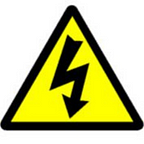The Ultimate Guide to Insulation Matting: Types, Benefits, and Applications
Insulation matting is a crucial component in various industries, providing essential protection and enhancing safety. Whether you’re looking to safeguard your workspace from electrical hazards or improve thermal insulation, understanding the different types of insulation matting and their applications is key. In this comprehensive guide, we’ll delve into what insulation matting is, how it works, and how to choose the right type for your needs.
What is Insulation Matting?
Insulation matting is a type of protective flooring designed to provide insulation against electricity, heat, and other hazardous conditions. These mats are made from materials that resist electrical conductivity, thermal transfer, and static electricity, making them vital in environments where such risks are prevalent.
How Does Insulation Matting Work?
Insulation matting works by creating a barrier that prevents the transfer of electricity, heat, or static energy from one surface to another. This barrier helps protect both people and equipment from potential harm. For instance, electrical insulation mats are designed to prevent electrical currents from passing through to the ground, safeguarding workers from electrical shocks.
Types of Insulation Matting:
- Electrical Insulation Mats: These mats are specifically designed to provide protection against electrical hazards. They are commonly used in areas with high voltage equipment.
- Thermal Insulation Mats: Used to reduce heat transfer, these mats are ideal for environments with high temperatures.
Anti-Static Matting: This type of matting prevents the buildup of static electricity, protecting sensitive electronic equipment. - Rubber Insulation Mats: Known for their durability and non-slip properties, rubber mats are versatile and widely used in various settings.
Benefits of Using Insulation Matting:
- Enhanced Safety: Insulation matting significantly reduces the risk of electrical shocks and burns, providing a safer working environment.
- Energy Efficiency: Thermal insulation mats help in maintaining temperature control, reducing energy costs.
- Protects Equipment: Anti-static mats prevent damage to sensitive electronic devices by dissipating static electricity.
- Durability: High-quality insulation mats are long-lasting and can withstand harsh industrial conditions.
How to Choose the Right Insulation Matting?
Selecting the appropriate insulation matting depends on several factors:
- Identify the Hazard: Determine whether you need protection against electrical, thermal, or static hazards.
- Material: Choose a mat made from a suitable material, such as rubber for durability or specialized polymers for high heat resistance.
- Standards and Certifications: Ensure the matting meets relevant safety standards and certifications for your industry.
- Environment: Consider the specific conditions of your workspace, such as exposure to chemicals or extreme temperatures.
Common Applications of Insulation Matting:
- Industrial Settings: Factories and manufacturing plants use insulation matting to protect workers from electrical and thermal hazards.
- Electrical Substations: High voltage areas require electrical insulation mats to prevent electrical shocks.
- Workshops: Anti-static mats are essential in workshops that handle electronic components to avoid damage from static electricity.
- Commercial Kitchens: Thermal insulation mats help in maintaining safe temperatures in areas with hot equipment.
Installation and Maintenance
Installation:
a. Preparation: Ensure the surface is clean and dry before laying the matting.
b. Placement: Position the mats according to the layout of the workspace, ensuring full coverage of high-risk areas.
c. Securing: Use adhesive or mechanical fasteners if necessary to prevent movement.
Maintenance:
a. Regular Cleaning: Keep the mats clean by regularly sweeping and mopping with non-abrasive cleaners.
b. Inspections: Periodically inspect the mats for signs of wear and tear, replacing them if necessary to maintain safety standards.
Some important FAQs you should know
- What is the lifespan of insulation matting?
The lifespan varies based on usage and environment but high-quality mats can last several years with proper maintenance. - Can insulation matting be customized?
Yes, many manufacturers offer custom sizes and shapes to fit specific needs. - Are there eco-friendly options for insulation matting?
Yes, some mats are made from recycled materials and are environmentally friendly. - How effective is insulation matting in reducing energy costs?
Thermal insulation mats can significantly lower energy costs by maintaining temperature control and reducing the need for heating or cooling. - Where can I buy high-quality insulation matting?
High-quality insulation matting can be purchased from specialized industrial suppliers, both online and in physical stores.
Conclusion
Insulation matting plays a vital role in enhancing safety and efficiency in various industrial and commercial settings. By understanding the types, benefits, and applications, you can make an informed decision to protect your workspace effectively. Remember to choose the right matting based on your specific needs and ensure regular maintenance to maximize its lifespan and performance.
